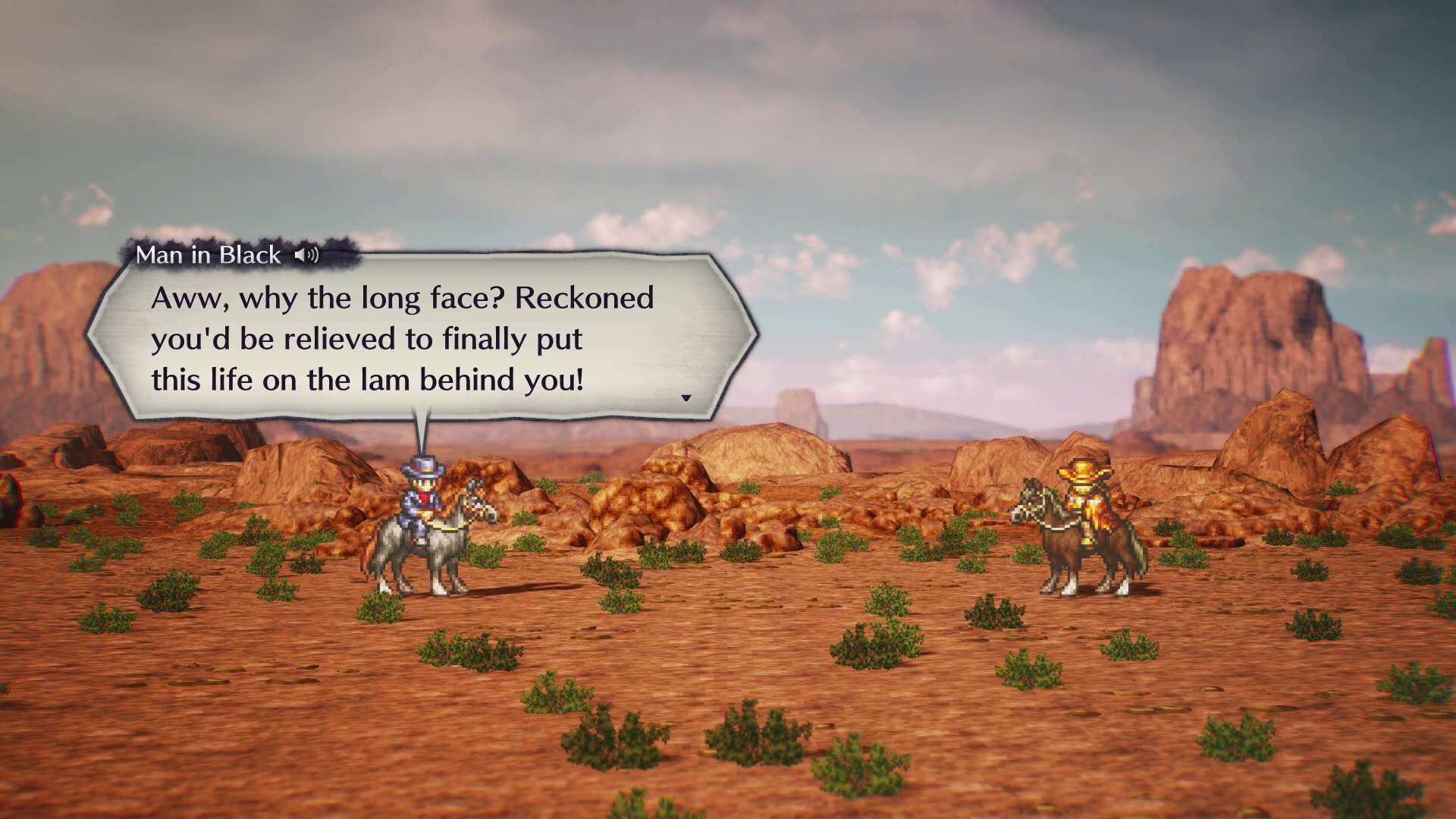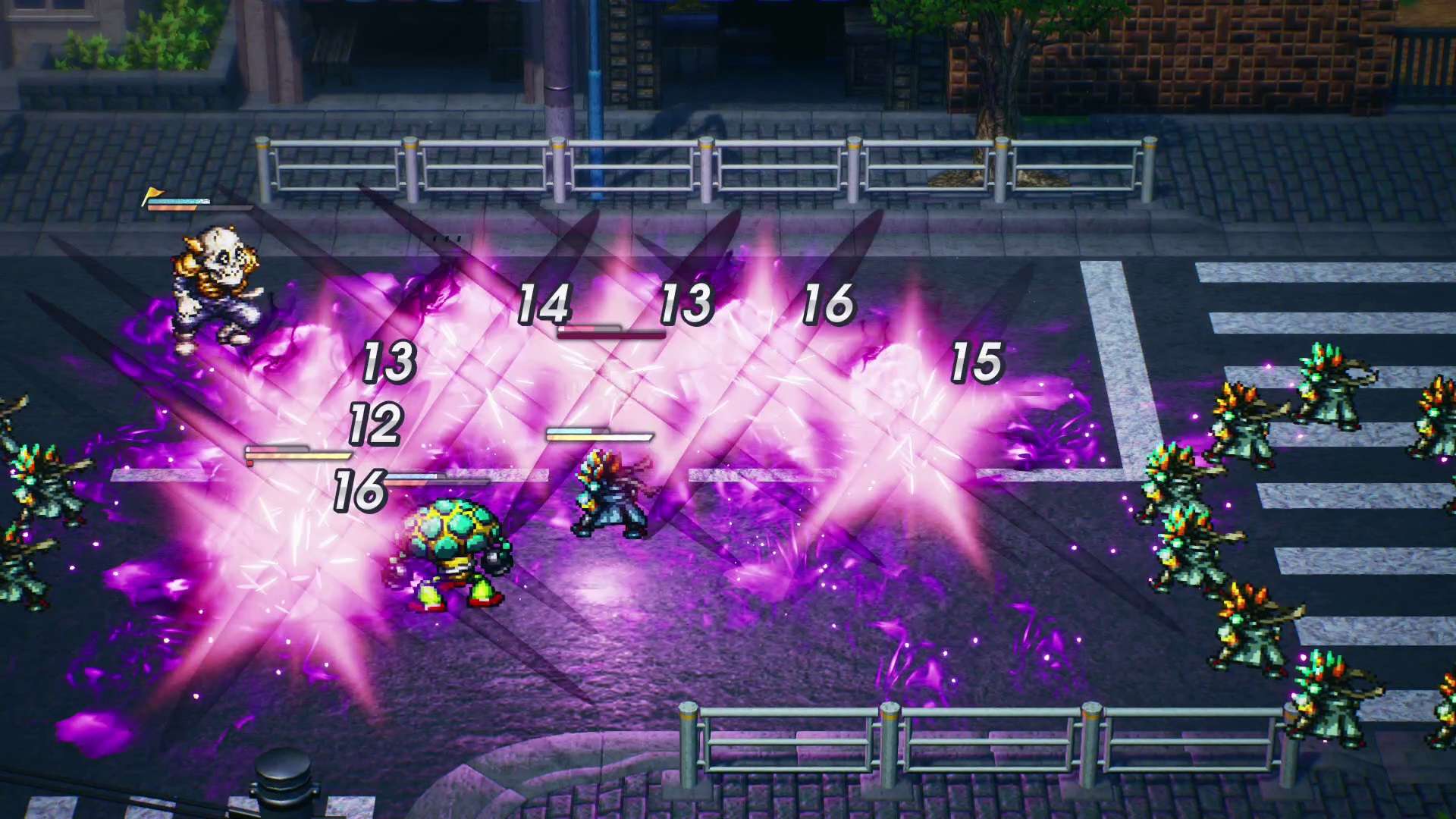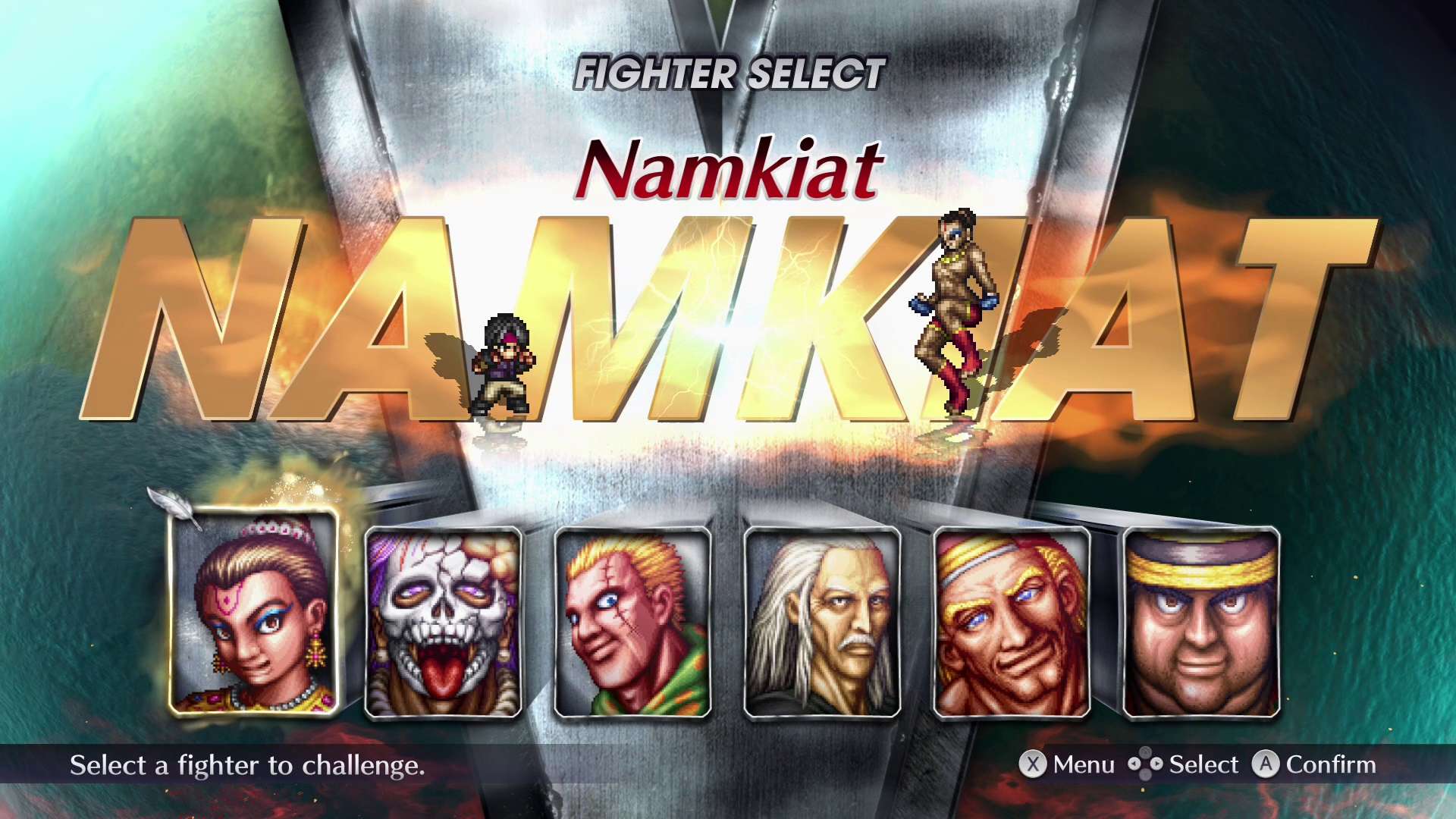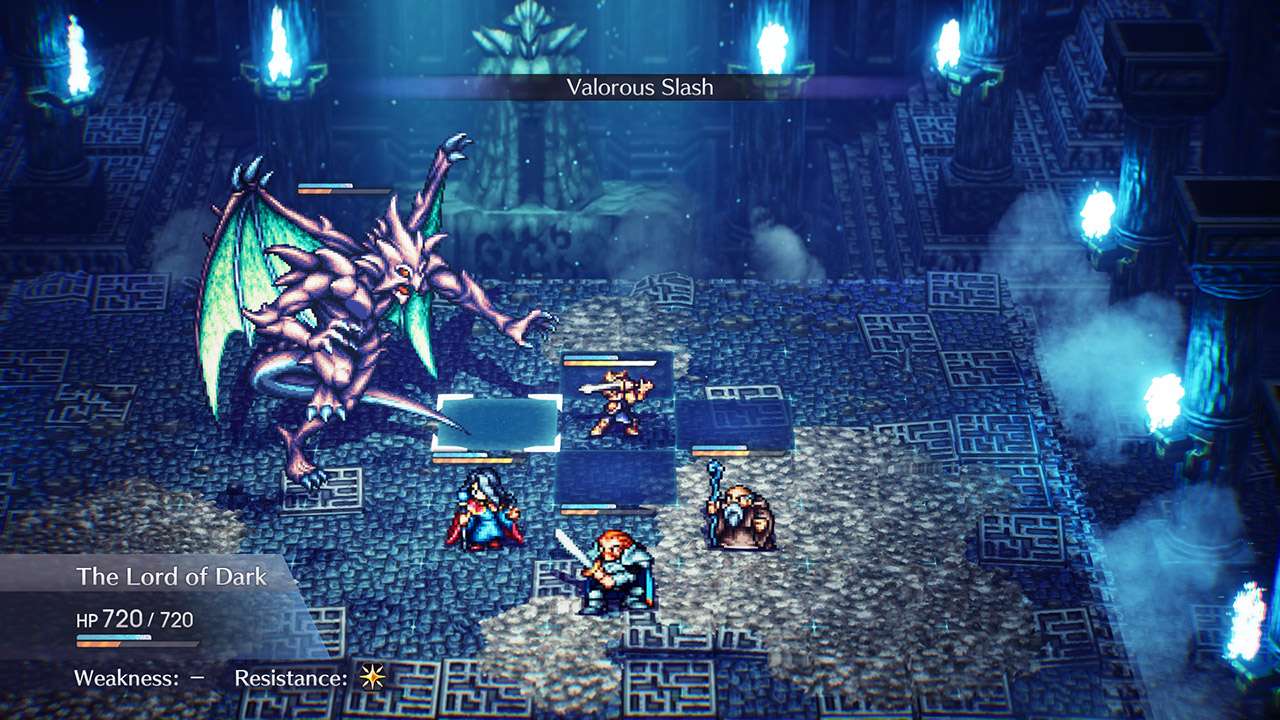
Live A Live Switch Review
When Live A Live was announced in February this year during the Nintendo Direct, I had never heard of the game and assumed it was a new Japanese Role Playing Game (JRPG) using the same visual style as Octopath Traveler. It turned out to be a remake of a Japanese-only title that came out on the Super Nintendo back in 1994. This seems to be an objective by Square Enix, as at the same time as this announcement, there were other titles announced, such as Front Mission and Front Mission 2 getting remakes, plus there are also the HD remasters of older games getting announced all the time, even Tactics Ogre just got a remake announcement a few weeks ago. What this means for most people – as I can only imagine the super hardcore played the fan translation – is a feeling of a new game, and in fact, the way Live A Live was designed, even from way back in 1994, it offers something a little different from the standard JRPG.
This begins with the game’s structure to the story, or lack of it because when first starting the game, the player is asked to pick from one of seven scenarios. These scenarios each feature unique characters and time periods and appear to be generally separate stories from each other apart from a boss that has a similar name across them. They also present different content and length and can be done in any order, offering a chance to flow through whatever takes the player’s fancy. These can also be saved and exited before completing them, allowing anyone to play any of these stories at any point. If one story is becoming a little boring for the player, they can switch to another one and keep playing. It is a distinctive feature that is not often seen in JRPGs and this presents a refreshing progression throughout the game.

Due to the various content featured within these campaigns, their quality does differ slightly. For example, the first story I decided to do was set in the Wild West and lasted around 90 minutes. It featured more story and character development than anything else, as the battle count could be countered with your fingers, and the only real switch up was having to find items to plan a surprise trap on the outlaws who were coming to take over the town. My next was the “Near Future”, a campaign that lasted three hours. This felt like a traditional Japanese RPG with a mini-map and battles involving enemies moving around. The twist in this campaign was that the main character, Akira, can read people’s minds and he uses this ability to progress the story, eventually leading to controlling a giant robot to defend the town against a cult.
One more example is the “Present Day”, which involved controlling a martial artist, with a story that is heavily focused on combat, as the player goes around the world fighting opponents in a sort of boss wave mode, beating each one until the credits rolled after 40 minutes. You can expect around 19-21 hours from the game depending on how fast you get through all the chapters. Let’s just say that those seven are not the only chapters you need to beat to complete the game, but the additional chapters that unlock do suffer from some grinding issues if you want to beat the optional content.

The biggest difference between the original release and this remake is obviously the change to Square Enix’s superb-looking graphics render that they dub “HD-2D”, a visual style that was used with Octopath Traveler. This is in essence bringing 2D sprites into 3D backgrounds using Unreal Engine, which helps bring their visuals up to the high-definition standard that people expect from games nowadays but enables the artists to keep that classic look of the old pixel-based Japanese RPGs. It helps that the 3D models are wrapped in a sort of pixelated texture to help uphold that old art style. Not everything is for a throwback to the 90s, as using Unreal Engine enables the developers to bring in advance graphical features, such as the use of bloom, depth of field and better lighting and shadow techniques. This helps Live A Live deliver a visual treat on the Nintendo Switch, be it on the TV or on the device itself, especially the OLED version.
Audio has also been improved for the remake. New inclusion is voice acting, which comes both in Japanese and English options. The quality of the voice acting is rather standard, with nothing on par compared to the other two HD-2D titles that came before. It does feel that the English voice acting was an afterthought here, as the delivery has no umph, feeling rather stiff and voided of emotion. It is passable, but some people might prefer switching to Japanese voices, so they do not have to deal with the mundane voice acting.

The original score has been rearranged by the same composer and does a good job of upholding the original track but throwing in some additional complexity. Having listened to a few of the original tracks and compared them to what is in this remake, I have to say that they do sound like well-done conversions of the original score by Yoko Shimomura, who has done such brilliant soundtracks as Parasite Eve (please remake this game, Square Enix), and Legend of Mana.
Combat participation depends on which story is selected, but no matter where it fits in within the plot, be it controlling a giant mech, a one vs one with a bounty hunter, or controlling a whole party, when combat becomes active each story uses the same grid-based combat system be it against a boss or a multitude of enemies. Time is the key to actions, with every unit, be it enemy or friend, having its own time bar that fills up whenever someone moves on the grid or performs an action. This makes for some interesting conflicts because unless you skip, use an item or attack, the friendly character can keep moving around the grid until they are in the required position. What this does mean is that if an enemy time bar fills up before the friendly unit performs a none moving action, then the enemy will interrupt with an attack.

The use of a grid makes Live A Live’s battles more strategic than a standard turn-based JRPG, as positioning, attack range and enemy weaknesses play an important factor in dealing the most damage in a turn. One thing to note is that there is no metre for actions, so all the moves available to the player simply take a specific amount of time to perform. A simple kick might be instant, but a move that inflicts over a big area might take a little longer before it comes out. The game indicates this with details on the move, such as the type of damage it does, how many hits and how long it takes to cast. The approach to battles depends on who the enemy is. Some foes are pushovers and will die from a basic attack, but some fights require the use of debuffs and other elements, such as pushback moves to knock the enemy a few grid spaces back to be kept at a safe distance. This is mostly shown off in the Martial Arts story, where each fight is in essence a boss fight, where each boss is skilled in a specific attack style that the player must figure out and counter to win the fight.
Live A Live has been good to experience so many years after its original Japanese release in 1994. Clearly the wonderful visual upgrade, the enhanced audio additions and quality of life improvements help this be the version to play, and it will be for a lot of people who never got to experience the Japanese release on the Super Nintendo. The good news is I am told it remains very faithful to the original, although not many people will get to experience that, so this will be a fresh new JRPG for most folk.
The structure of this JRPG gives it its unique identity compared to many other games in the same genre, and the vast category of ideas, eras and topics that the game’s stories go through help keep it feeling fresh. Not all the stories are treated equally, as some are more exciting than others, and those are what cause the game to falter somewhat, as I did find a couple of the stories not that remarkable. Still, I love the fact that Square Enix was willing to bring a once-exclusive Japanese game from the 1990s a new lease of life and remake it for a release outside of Japan because Live A Live still feels distinct after all these years. With so many JRPGs available on the market, this is a testament to how unique it was back in the 90s that it can still be fresh in today’s market. I think fans of the genre will really appreciate what Live A Live is trying to accomplish with its storytelling variety, even if the battles can become grindy towards the end of the game.
